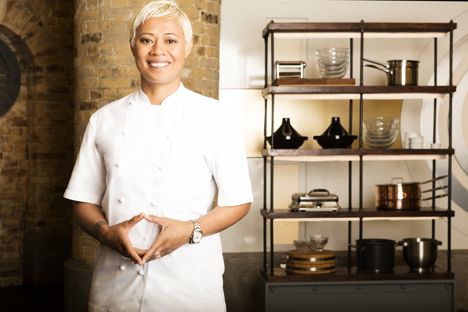
Five things we learnt from week one of MasterChef: The Professionals 2016
From strange steaks to vile veloutés, the first week of MasterChef saw some ambitious chefs go into meltdown over basic techniques. Here are five lessons we all learnt over the initial three episodes.
Five things we learnt from week one of MasterChef: The Professionals 2016
From strange steaks to vile veloutés, the first week of MasterChef saw some ambitious chefs go into meltdown over basic techniques. Here are five lessons we all learnt over the initial three episodes.
View more from this series:
MasterChef: The Professionals 2016If you’re a fan of watching professional chefs flounder, panic and eventually produce incredible plates of food, 2016 has been a pretty good year. As soon as Great British Menu came to a close, Gregg, Monica and Marcus were on hand to step right in and kick-start a new series of MasterChef: The Professionals. While there are less shots of people asking each other if they’re nervous and no liquid nitrogen to be seen (for now, at least), it’s good to see less established chefs taking a punt and putting their career on the line in a bid to make a name for themselves.
However, there’s always the risk of being caught out by a few basic techniques or recipes that – in theory – every chef should know. Such as…
1. Check the bottom of your tart tin
As many of the unfortunate contestants in the first episode of this series discovered, tart tins have evolved in all sorts of exciting ways since the dark days of culinary competitions. Flipping their painstakingly crafted Pistachio and raspberry tarts out of their tins upside-down onto a plate, many lost that professional finish they’d worked so hard to achieve. They should have taken a closer look at the tin – just a light prod on the bottom would’ve released the tart gently and in one perfect piece. Welcome to the future, chefs – where loose-bottomed tart tins are a reality!
2. You can get T-bone steaks from more than just beef
Episode two’s technical challenge seemed to confuse not only Gregg (not hard) but a lot of viewers, too, as Monica claimed you can get a T-bone steak from a plaice. Rather than presenting some sort of genetically modified cow-fish mutant being, there was relief all round when we realised it was just a way of portioning the plaice into bone-in steaks, completely beef-free. If you’re wondering how to fillet a flat fish in the more conventional way, take a look at our video guide.
3. Know your classical French techniques
The wild garlic velouté challenge Marcus and Monica (and Gregg, we suppose) set in episode two stumped pretty much everyone, which goes to show knowing your French classics is pretty vital if you’re in a professional cooking competition. Essentially a stock thickened with roux (although these days it can refer to almost any sauce thickened with butter or cream), it’s one of the five ‘mother sauces’ that form the basis of classical French cooking – something that a lot of the chefs need to read up on.
4. Brush up on the basics
In general, episode two was a bit of a disaster all round, as something as simple as a sauce vierge – an uncooked dressing of tomatoes, oil, herbs and citrus juice – resulted in mass panic amongst the contestants. The few who did get it right struggled with the plaice, once again showing that it’s no use being all bells and whistles if you haven’t mastered the basics. Maybe they should’ve taken a look at Steven Doherty’s Salmon with sauce vierge before applying to the show.
5. Don’t put asaparagus in cakes
This is something most of us could probably guess, but it’s always nice to have confirmation. Despite James’ obvious technical skill, his borderline insane decision to serve a lemon cake with a stalk of asparagus baked into it (alongside another caramelised stalk and some blobs of asparagus gel) was just plain weird rather than avant-garde. Unsurprisingly, it didn’t go down well, prompting some great facial expressions from Monica and withering put downs from the critics. While some vegetables work beautifully in cake (see: carrot, courgette, beetroot), asparagus is perhaps just a little too vegetal for pudding.


